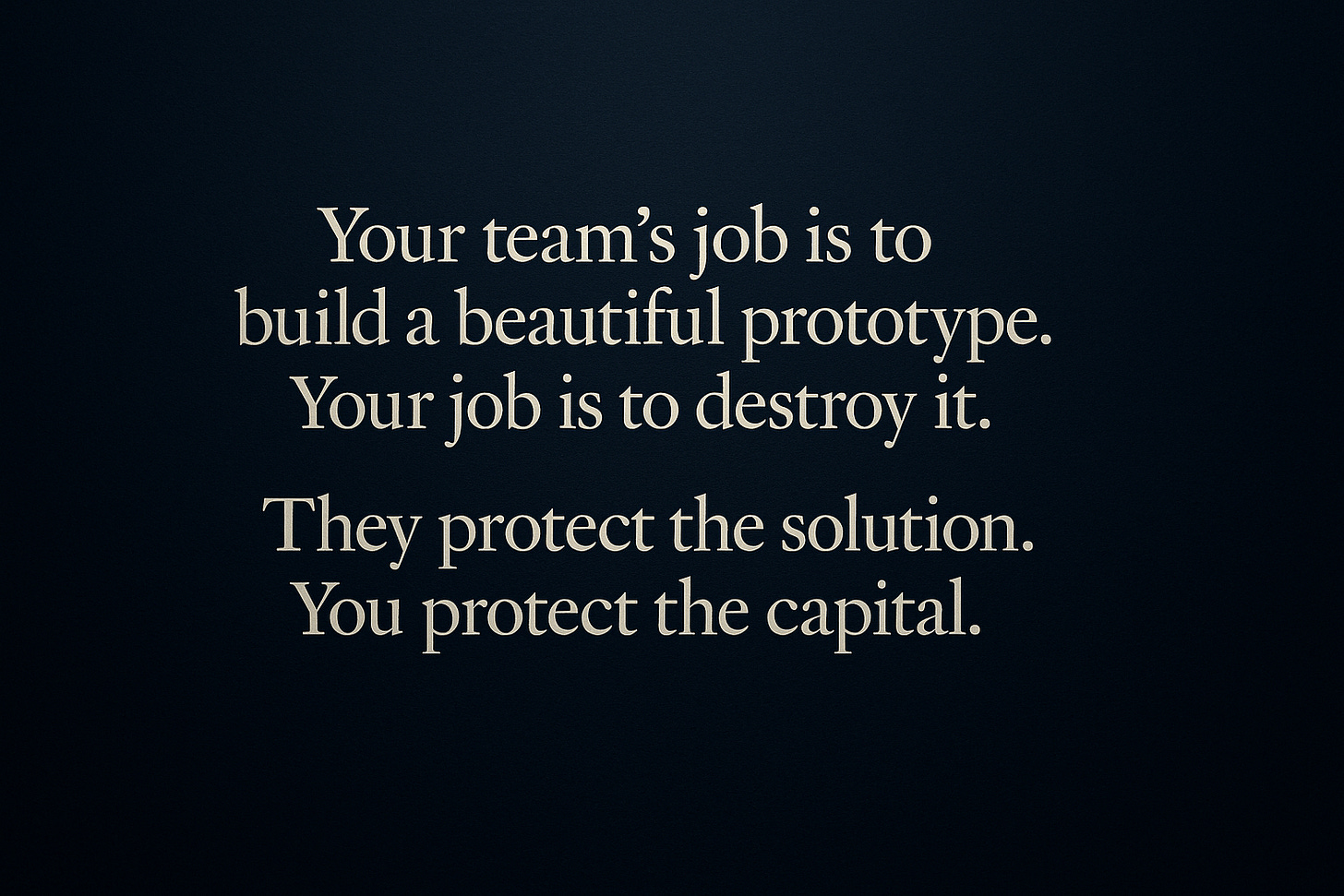The scene is familiar.
Your product team calls a meeting. They are proud. Hopeful. They present the new prototype, the result of weeks of hard work. The solution to the customer's problem.
You watch the demo. It looks clean. It seems logical.
You ask the team what the feedback has been. They show you quotes. "This is interesting." "I like the clean interface." "This could be useful."
The feedback is positive. But it is not a commitment.
There are no checkbooks on the table. No one is asking, "When can I have this?" You thank the team for their work, but as you leave the room, you feel a quiet sense of unease.
That unease is your intuition telling you the truth.
This was not a test. It was a performance. And your company is now one step closer to failure.
The Default Is Wrong
The moment your team has only one solution, they fall in love. The prototype becomes their baby.
And when they show their baby to the world, they are no longer testing a hypothesis. They are seeking praise. They are listening for validation, and they will unconsciously filter out any signal that threatens the idea they have worked so hard on.
This is the second out of five strategic fatal errors that I call Solution Assumption. Believing your job is to build a thing, and then hope it's the right thing.
The correct assumption must be the opposite.
Assume you are wrong. Be surprised when you are right.
A prototype is not a product to be admired. It is a weapon to be used against your own flawed assumptions. Its only purpose is to find the truth, and the truth is often brutal.
The Rule of Three
To escape this trap, you must install a new, non-negotiable rule. A rule that forces objectivity and kills emotional attachment.
Never build one prototype. Build three.
Three different concepts. Not just three slightly different versions of the same idea. Three fundamentally different approaches to solving the core problem.
Present them as equal. Show them to the potential customer and ask a simple, powerful question: "Which of these, if any, comes closest to solving your problem?"
Listen.
This simple protocol changes everything.
The customer's mindset shifts from politeness ("Do I like what they are showing me?") to critical evaluation ("Which of these helps me win?").
Your team's mindset shifts from seeking validation to seeking a verdict. They are no longer defending their baby. They are gathering intelligence to build the right one. They learn more from the two prototypes the customer rejects than from the one he leans toward.
All of this happens before you write a single line of code. Before you risk a single dollar of your capital on a beautiful, beloved, and completely wrong solution.
A question for you as the leader
Look at the project your team is working on right now. The one they are presenting with such pride.
Ask yourself: are they building a product to be validated?
Or are they building a hypothesis to be broken?
Your answer will determine if you are building a business that will survive.


